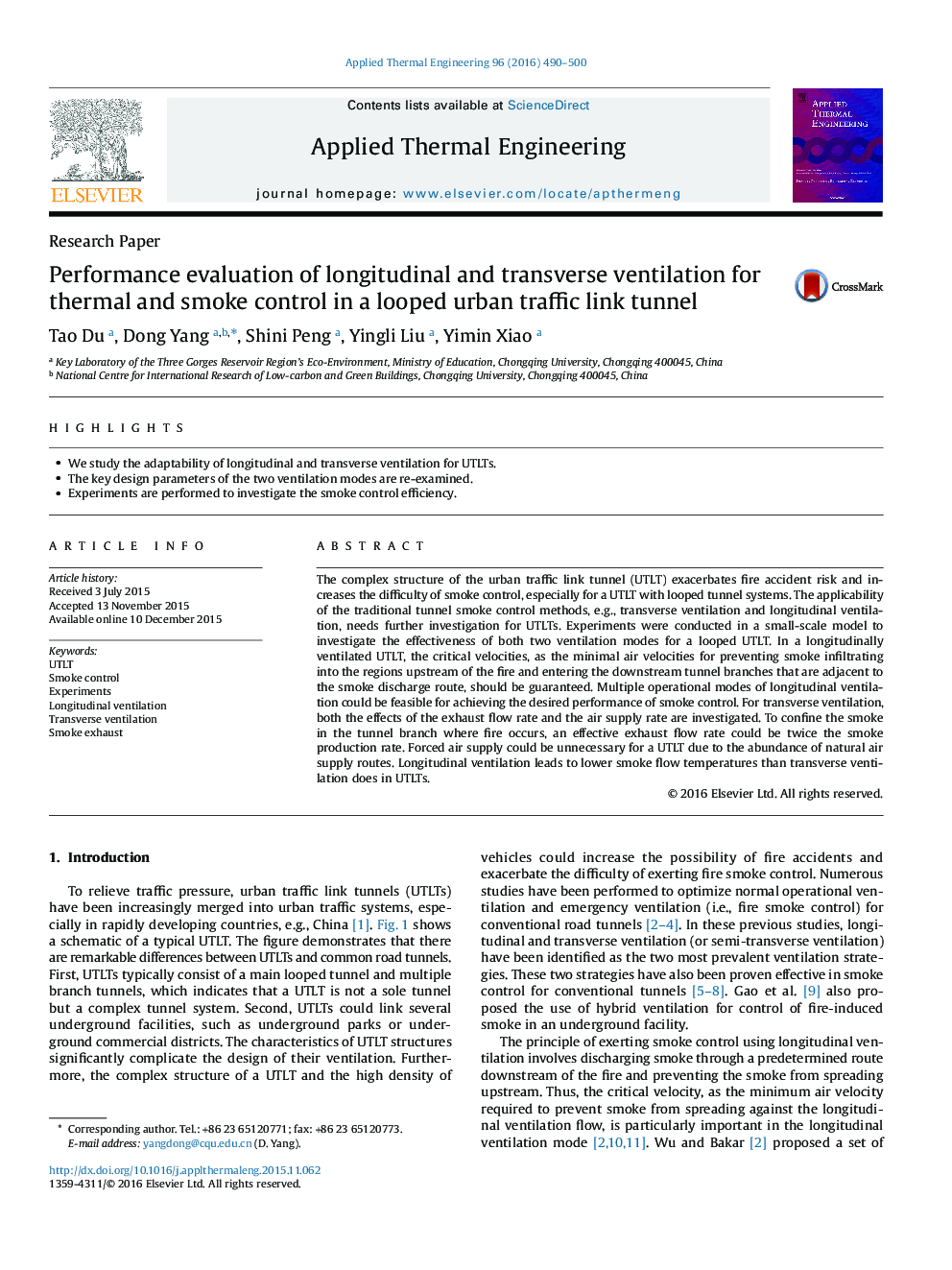| کد مقاله | کد نشریه | سال انتشار | مقاله انگلیسی | نسخه تمام متن |
|---|---|---|---|---|
| 644990 | 1457132 | 2016 | 11 صفحه PDF | دانلود رایگان |
عنوان انگلیسی مقاله ISI
Performance evaluation of longitudinal and transverse ventilation for thermal and smoke control in a looped urban traffic link tunnel
ترجمه فارسی عنوان
ارزیابی عملکرد تهویه ی طولی و عرضی برای کنترل حرارتی و دود در تونل اتصال ترافیک شهری
دانلود مقاله + سفارش ترجمه
دانلود مقاله ISI انگلیسی
رایگان برای ایرانیان
کلمات کلیدی
موضوعات مرتبط
مهندسی و علوم پایه
مهندسی شیمی
جریان سیال و فرایندهای انتقال
چکیده انگلیسی
The complex structure of the urban traffic link tunnel (UTLT) exacerbates fire accident risk and increases the difficulty of smoke control, especially for a UTLT with looped tunnel systems. The applicability of the traditional tunnel smoke control methods, e.g., transverse ventilation and longitudinal ventilation, needs further investigation for UTLTs. Experiments were conducted in a small-scale model to investigate the effectiveness of both two ventilation modes for a looped UTLT. In a longitudinally ventilated UTLT, the critical velocities, as the minimal air velocities for preventing smoke infiltrating into the regions upstream of the fire and entering the downstream tunnel branches that are adjacent to the smoke discharge route, should be guaranteed. Multiple operational modes of longitudinal ventilation could be feasible for achieving the desired performance of smoke control. For transverse ventilation, both the effects of the exhaust flow rate and the air supply rate are investigated. To confine the smoke in the tunnel branch where fire occurs, an effective exhaust flow rate could be twice the smoke production rate. Forced air supply could be unnecessary for a UTLT due to the abundance of natural air supply routes. Longitudinal ventilation leads to lower smoke flow temperatures than transverse ventilation does in UTLTs.
ناشر
Database: Elsevier - ScienceDirect (ساینس دایرکت)
Journal: Applied Thermal Engineering - Volume 96, 5 March 2016, Pages 490-500
Journal: Applied Thermal Engineering - Volume 96, 5 March 2016, Pages 490-500
نویسندگان
Tao Du, Dong Yang, Shini Peng, Yingli Liu, Yimin Xiao,
